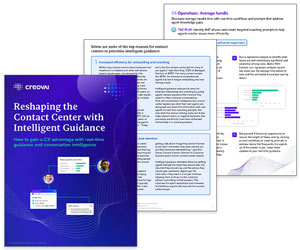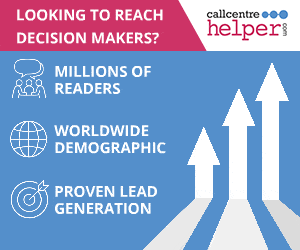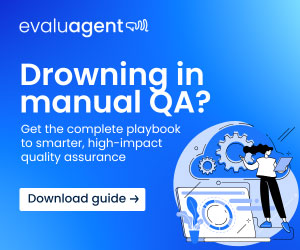Mapping the customer journey is a great way for service teams to better understand key pain points and where there’s room for improvement.
However, these exercises often only skim the surface – so how do you go deeper to really understand what your customers are going through and where you can make the biggest difference?
10 Ways to Go Deeper in Your Next Customer Journey Mapping Exercise
We asked our consultants panel for their best tips and advice on how to take your customer journey mapping to the next level – with creative ways to use data, engaging team exercises, and more.
1. Make Sure Agents Truly Understand the Task Ahead by Asking Them to Map “How to Make a Cup of Tea” First

Before mapping the customer journey, get everyone familiar with the process of mapping by getting them to complete a non-work activity, such as mapping how to make toast, or a cup of tea – in diagram form only.
Putting people in smaller groups for this and then bringing everyone together to review the maps will bring humour, collaboration, and a focus on the work ahead.
Contributed by: Nicola Callan, Founder & Director at Boost HR
2. Ask “Why” Repeatedly to Uncover Deeper Insights
Use the “5 Whys” technique to dig beneath the surface of customer issues like churn. Don’t just look at when or how often it happens – ask “What chain of events led to this cancellation?”
By asking “why” repeatedly, you uncover deeper insights and ensure you’re addressing the root cause, not just a surface-level symptom. This leads to more effective, lasting solutions.
Contributed by: Afshan Kinder, Thought Leader and co-author of three books – including ‘Call Centers for Dummies’
3. Prompt an AI Tool to Act in the Persona of a CX Expert

Generative AI is a great tool that can be used to analyse and improve the customer journey efficiently.
A great example is by prompting your favourite AI tool to act in the persona of a customer experience (CX) expert.
Once you have instructed the tool to act in this persona, you can then ask it how you can understand the customer journey on a deeper level.
The tool is guaranteed to give you a wide range of ideas tailored to your unique business needs.
Contributed by: Rachel Williams, Founder & Training Consultant at The Experience Corporation
4. Map the Customer Journey Against Friction Points for Agents

An approach that’s often overlooked is starting with reviewing your employee experience first – as your customer frustrations can be mapped back to points in your process that you’ve made it difficult for your teams to carry out.
Focusing on your employee experience initially will help to identify where you can also make a positive difference in your prospect and customer journey.
For example, is your data across hundreds of documents that your teams have to scroll through? A time-consuming process that often leads to customers hanging on hold for too long? Would consolidation of data and perhaps some automation and self-service improve the journey for your teams AND your customers?
Contributed by: Robyn Tully, Managing Director, Empowerful Consultancy
5. Create a Safe and Supportive Environment for Everyone Involved
You may find that those who are involved are protective, biased and possibly feel under threat, or that the part they play is being criticized.
So, proactively create a safe and supportive environment, where the focus is only on how the customer perceives the journey:
- It can be particularly powerful to ask the question ‘if this were your loved one or someone you cared about going through this journey, what is the experience you’d wish for them?’
- Consider hosting an empty chair in the room when you are journey mapping, as this could be the seat of the ‘customer’. It can be helpful to include customer personas and have these personas at the heart of the session to let the customer have the final say.
- Always try to bring the conversation back to questions such as “What is the customer experiencing/feeling at that point?”, “What is the impact on the customer?”, “What harm could that cause for the customer?”
Contributed by: Jenna Birchall, Vulnerability Consultant at Helen Pettifer Training Ltd
6. Explore Your Rich, Unfiltered Customer Feedback – Just Waiting to Be Noticed

If you want to go deeper, start with the data and let it tell a story. Look at where customers are dropping off, timing out, or repeating actions.
Are they bouncing from a page, opening multiple help articles, or reaching out with the same questions? That’s where the friction lives.
Then dig into what people are actually saying. Chat transcripts, inbox messages, reviews, social comments; there’s so much rich, unfiltered feedback sitting there, waiting to be noticed.
Social listening is another tool that can tell you what customers care about before they even contact support too.
Contributed by: Jenny Dempsey, Community & Customer Service Leader
For advice on how to harness unstructured Voice of the Customer (VoC) data for better insights, read our article: Are You Embracing the Potential of Unstructured VoC Data?
7. Create a Rotating Virtual Customer Feedback Panel

Consider creating a rotating virtual customer feedback panel.
By engaging a diverse group of customers each quarter, you can ask questions to identify pain points early, gather fresh insights, and test ideas.
It is a safe way to learn more than what the customer satisfaction surveys tell you.
Contributed by: Afshan Kinder, Thought Leader and co-author of three books – including ‘Call Centers for Dummies’
8. Be Clear Whether You Are Mapping the Current OR Intended Customer Journey
Be clear about whether you are mapping the current customer journey or the intended customer journey. They are rarely the same thing.
You can do both, but I would recommend doing one at a time rather than concurrently as you’ll never get past discussion stage!
Contributed by: Nicola Callan, Founder & Director at Boost HR
9. Review and Monitor Vulnerable Customer Experiences Too

Customers who are or may be vulnerable might not always actively complain, understand they have a right to complain, know to make a complaint or have the confidence to complain, if a service hasn’t met their needs.
It’s important to review and monitor vulnerable customer experiences and gain insight from your colleagues supporting customers too.
10. Remember the Customer Journey Really Starts When They Are Browsing Your Products or Services
When you are mapping customer journeys, consider whether the very first point before they are your customer is built into your criteria to map?
For example, what experience are they having whilst they are sat at home researching your organization and how will you meet their needs?
Identifying the first step in understanding what might be happening in their personal circumstances, what their needs are and why they require your service and support, can really help to put you in the customer’s shoes.
Contributed by: Jenna Birchall, Vulnerability Consultant at Helen Pettifer Training Ltd
What Have You Tried to Take Your Customer Journey Mapping to the Next Level?
Click here to join our NEW Readers Panel to share your experiences and feature in future Call Centre Helper articles.
If you are looking for more information to help improve your customer journey maps, read these articles next:
- How to Improve Your Customer Journey Mapping
- Five Steps to Map Emotions Onto the Customer Journey
- Customer Journey Map Examples With Expert Analysis
Author: Megan Jones
Reviewed by: Xander Freeman
Published On: 1st Sep 2025 - Last modified: 13th Nov 2025
Read more about - Customer Service Strategy, Afshan Kinder, Customer Engagement, Customer Experience (CX), Customer Journey, Customer Service, Jenna Birchall, Jenny Dempsey, Nicola Callan, Rachel Williams, Robyn Tully, Service Strategy, Top Story











































